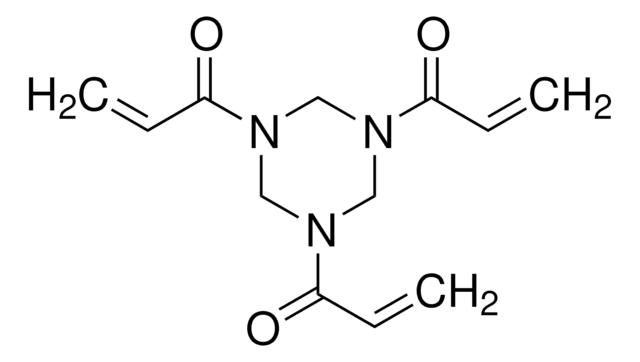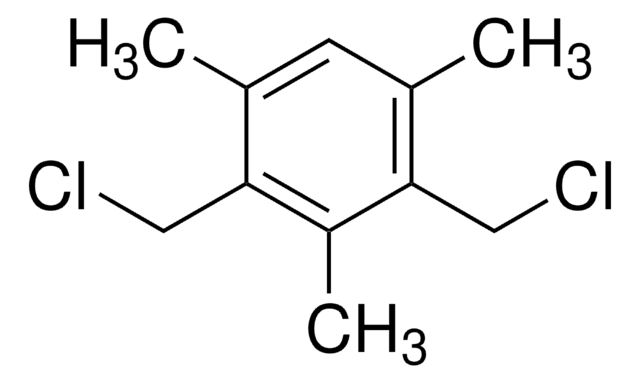657336
1,3,5-Tris(bromomethyl)benzene
97%
Synonym(s):
2,4,6-Tri(bromomethyl)benzene, Tribromomesitylene
About This Item
Recommended Products
Assay
97%
form
solid
mp
94-99 °C
SMILES string
BrCc1cc(CBr)cc(CBr)c1
InChI
1S/C9H9Br3/c10-4-7-1-8(5-11)3-9(2-7)6-12/h1-3H,4-6H2
InChI key
GHITVUOBZBZMND-UHFFFAOYSA-N
General description
Application
Signal Word
Danger
Hazard Statements
Precautionary Statements
Hazard Classifications
Skin Corr. 1B
Storage Class Code
8A - Combustible corrosive hazardous materials
WGK
WGK 3
Flash Point(F)
Not applicable
Flash Point(C)
Not applicable
Personal Protective Equipment
Certificates of Analysis (COA)
Search for Certificates of Analysis (COA) by entering the products Lot/Batch Number. Lot and Batch Numbers can be found on a product’s label following the words ‘Lot’ or ‘Batch’.
Already Own This Product?
Find documentation for the products that you have recently purchased in the Document Library.
Customers Also Viewed
Articles
Professor Chen (Nankai University, China) and his team explain the strategies behind their recent record-breaking organic solar cells, reaching a power conversion efficiency of 17.3%.
Our team of scientists has experience in all areas of research including Life Science, Material Science, Chemical Synthesis, Chromatography, Analytical and many others.
Contact Technical Service













